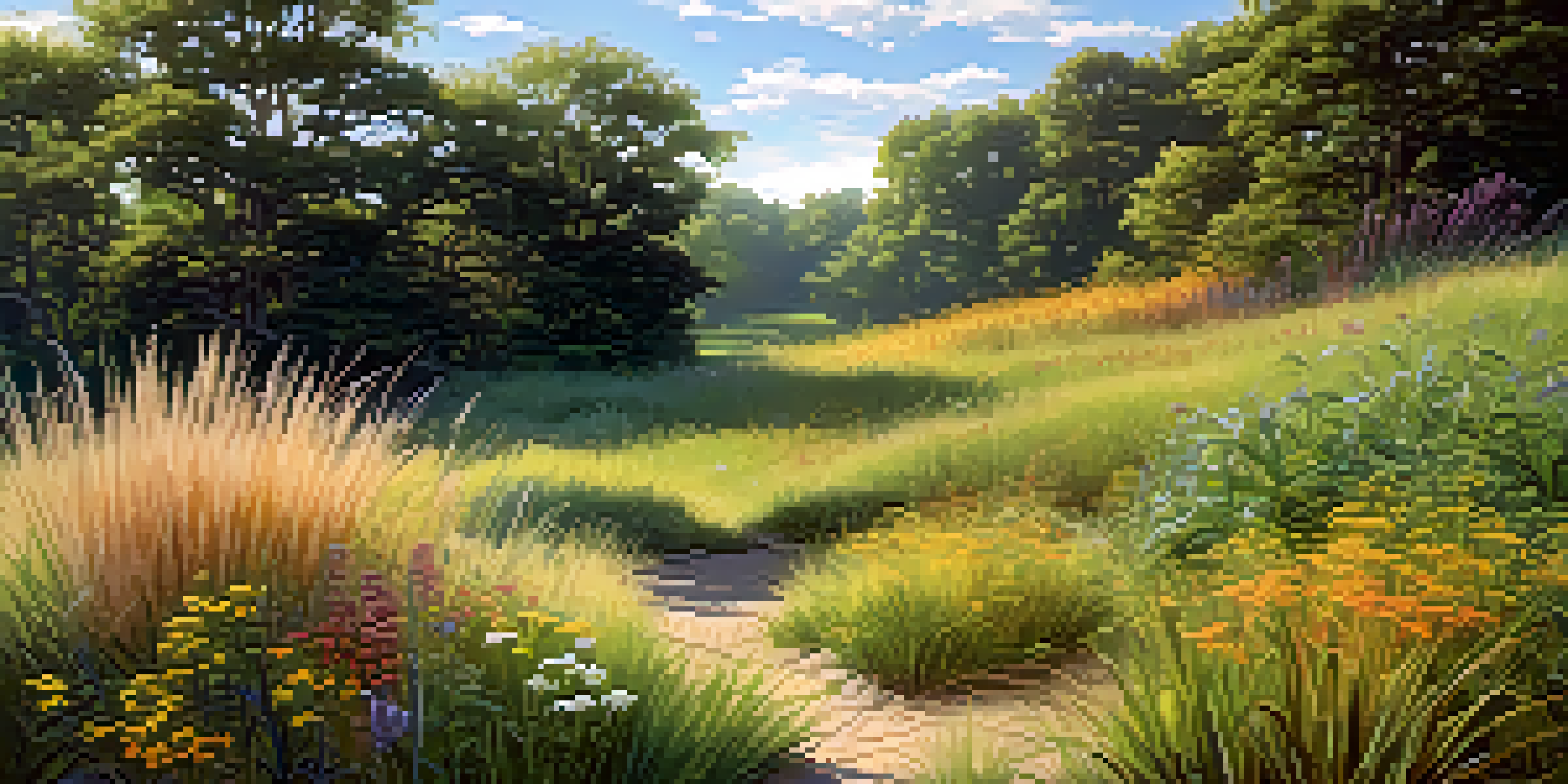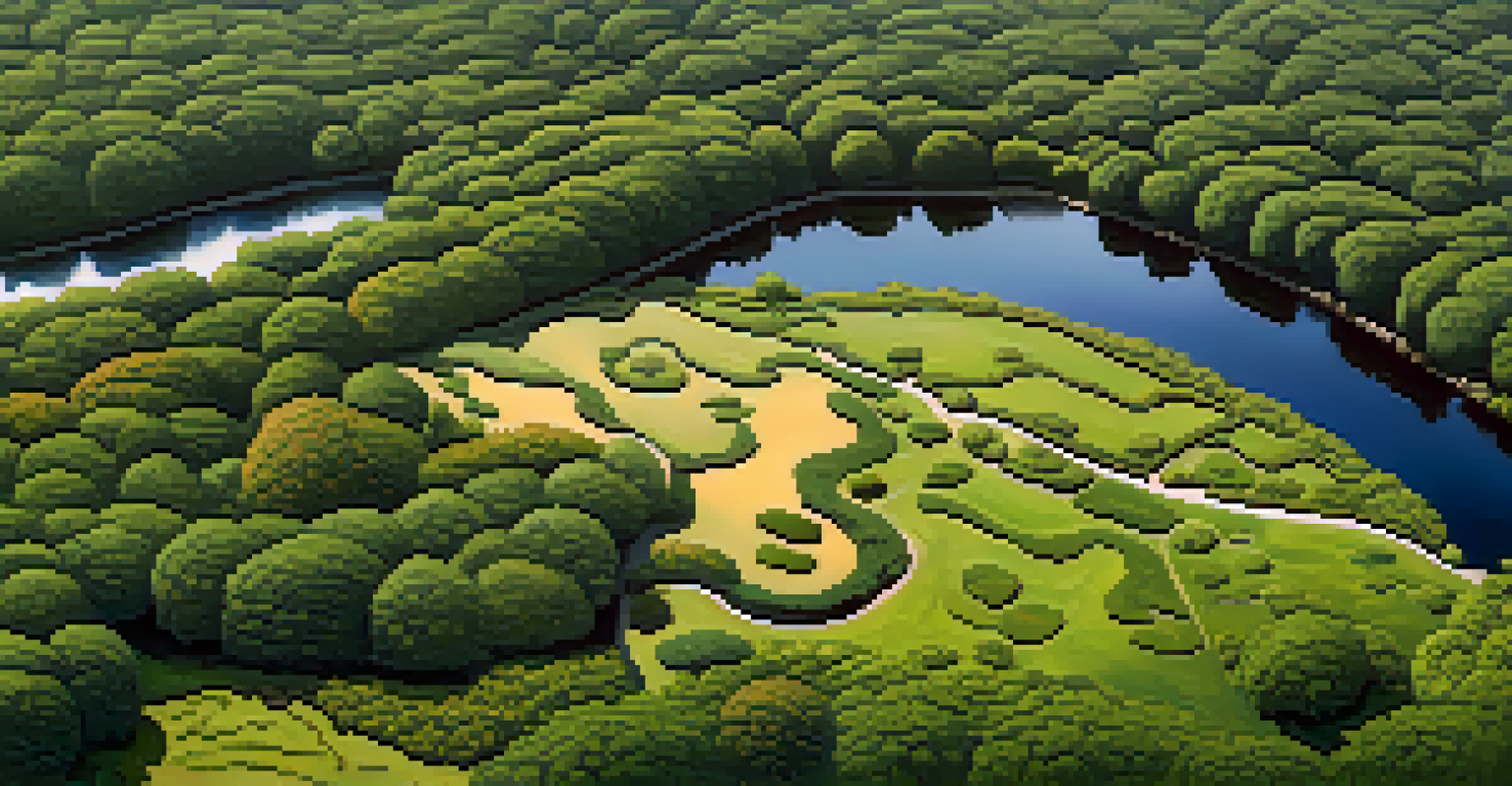Sustainable Landscaping: Plants That Prevent Soil Erosion

Understanding Soil Erosion and Its Impact
Soil erosion is the process where the top layer of soil is worn away, often by wind or water. This not only affects the health of the land but also leads to loss of nutrients essential for plant growth. When soil erodes, it can carry away harmful chemicals and pollutants into waterways, harming aquatic life and disrupting ecosystems.
The soil is the great connector of our lives, the source and destination of all. Food, fiber, shelter, and fuel all come from the soil. It is the basis of our health, our culture, and our economy.
The consequences of soil erosion can be severe, impacting agriculture, natural habitats, and even our water supply. Consider how a beautiful garden can quickly turn into a barren patch if not properly managed. Understanding this, it's clear that preventing soil erosion is crucial for sustainable landscaping.
One effective way to combat soil erosion is through the strategic use of plants. Not all plants are created equal; some have root systems that hold soil in place, while others may exacerbate the problem. Let’s explore which plants are best suited for this important task.
The Role of Root Systems in Soil Stabilization
Plants help prevent soil erosion primarily through their root systems. Deep-rooted plants can anchor soil more effectively than shallow-rooted varieties, creating a natural barrier against erosion. This anchoring effect is especially important on slopes or areas prone to runoff.

When rain falls, the roots of these plants absorb water and reduce the speed of runoff, allowing the soil to remain intact. Think of it like a net that catches falling leaves; the mesh holds everything together and prevents it from scattering. Without this support, soil can easily wash away during heavy rains.
Soil Erosion Affects Ecosystems
Soil erosion not only depletes nutrients vital for plant growth but also pollutes waterways, impacting aquatic life.
Moreover, different types of roots serve unique purposes; fibrous roots spread out horizontally, while taproots go deep. This diversity in root systems is what makes a landscape resilient against erosion. Choosing the right plants is key to creating a stable environment.
Perennials: Nature's Erosion Fighters
Perennial plants are a fantastic choice for preventing soil erosion, as they live for multiple years and establish deep root systems. Plants like native grasses, wildflowers, and shrubs can effectively stabilize soil while providing beauty to your landscape. Their long-lasting nature means less frequent replanting and more consistent erosion control.
Take care of the land, and the land will take care of you.
For instance, ornamental grasses such as big bluestem and switchgrass not only add aesthetic appeal but also have extensive root systems that can hold the soil together. These plants thrive in various conditions, making them versatile options for different landscapes.
In addition to their soil-holding abilities, perennials require less maintenance than annuals, making them a sustainable choice for busy homeowners. By incorporating these resilient plants, you can create a lush, vibrant garden that also protects the land beneath it.
Ground Covers: Nature's Living Blankets
Ground cover plants serve as living blankets that protect the soil from erosion. These low-growing plants spread quickly, covering the ground and creating a barrier against the elements. Think of them as nature’s way of providing a protective shield for the soil.
Examples of effective ground covers include creeping thyme, sedum, and clover. These plants not only help prevent erosion but also improve soil health by adding organic matter as they grow and decompose. Their ability to thrive in various conditions makes them perfect for filling in bare spots and preventing soil loss.
Plants Stabilize Soil Effectively
Deep-rooted and native plants play a crucial role in preventing soil erosion by anchoring the soil and absorbing water.
By selecting a variety of ground covers, you can create a multi-layered landscape that is both functional and beautiful. This approach not only combats erosion but also contributes to biodiversity, making your garden a thriving ecosystem.
Trees: The Ultimate Soil Stabilizers
Trees are among the most effective plants for preventing soil erosion due to their extensive root systems. These roots can reach deep into the ground, anchoring the soil and preventing it from washing away. Moreover, trees provide shade and reduce the impact of raindrops on the soil surface, further protecting it from erosion.
Consider planting native tree species like oaks, maples, or willows, which are well-adapted to your local climate and soil types. These trees not only stabilize the ground but also support local wildlife, creating a balanced ecosystem. It's like having a natural fortress that protects the land while adding beauty to your surroundings.
Additionally, trees contribute to air quality and provide shade, making your landscape more enjoyable. By incorporating trees into your landscaping, you’re not just preventing erosion but also enhancing the overall health of your environment.
Native Plants: The Best Choice for Erosion Control
Native plants are specifically adapted to thrive in their local environment, making them excellent choices for erosion control. These plants have evolved over time to withstand local weather conditions, soil types, and pests, meaning they require less maintenance and water. By choosing native species, you’re supporting the local ecosystem while combating soil erosion effectively.
For example, native wildflowers and grasses can establish strong root systems that hold soil in place while attracting beneficial insects such as pollinators. This creates a vibrant and diverse landscape that not only prevents erosion but also supports wildlife. It’s like planting a mini nature reserve right in your backyard.
Sustainable Landscape Planning Matters
Creating a diverse landscape with various plant types can effectively combat soil erosion and enhance ecosystem health.
Moreover, native plants are often more resilient to disease and pests, reducing the need for chemical treatments. This makes them not only a sustainable choice but also a healthier option for both your garden and the environment.
Creating a Sustainable Landscape Plan
To effectively prevent soil erosion, creating a sustainable landscape plan is essential. Start by assessing your land's topography and identifying areas prone to erosion. This will help you determine where to plant specific species that can best stabilize the soil.
Consider combining various types of plants, including trees, shrubs, perennials, and ground covers, to create a layered approach. This diversity will ensure that your landscape remains resilient against erosion while providing visual interest and habitat for wildlife. It’s like crafting a symphony, where each plant plays a role in maintaining harmony.

Lastly, remember to maintain your landscape by regularly checking for signs of erosion and replacing any lost plants. This proactive approach will help keep your garden healthy and ensure that it continues to prevent soil erosion for years to come.
The Long-Term Benefits of Erosion Control
Investing in plants that prevent soil erosion yields long-term benefits that extend beyond just aesthetics. Healthy soil is crucial for growing food and supporting biodiversity, and by preventing erosion, you’re contributing to a more sustainable ecosystem. This not only enhances your property value but also promotes environmental health.
Additionally, controlling erosion can reduce the likelihood of costly repairs to your landscape over time. When soil is stable, there’s less chance of damage from runoff, flooding, or other environmental factors. It’s like building a strong foundation for a house; the better the foundation, the more secure your home will be.
Finally, creating a landscape that prioritizes erosion control can inspire others in your community to adopt similar practices. By leading by example, you can foster a culture of sustainability that encourages others to appreciate and protect their natural surroundings.